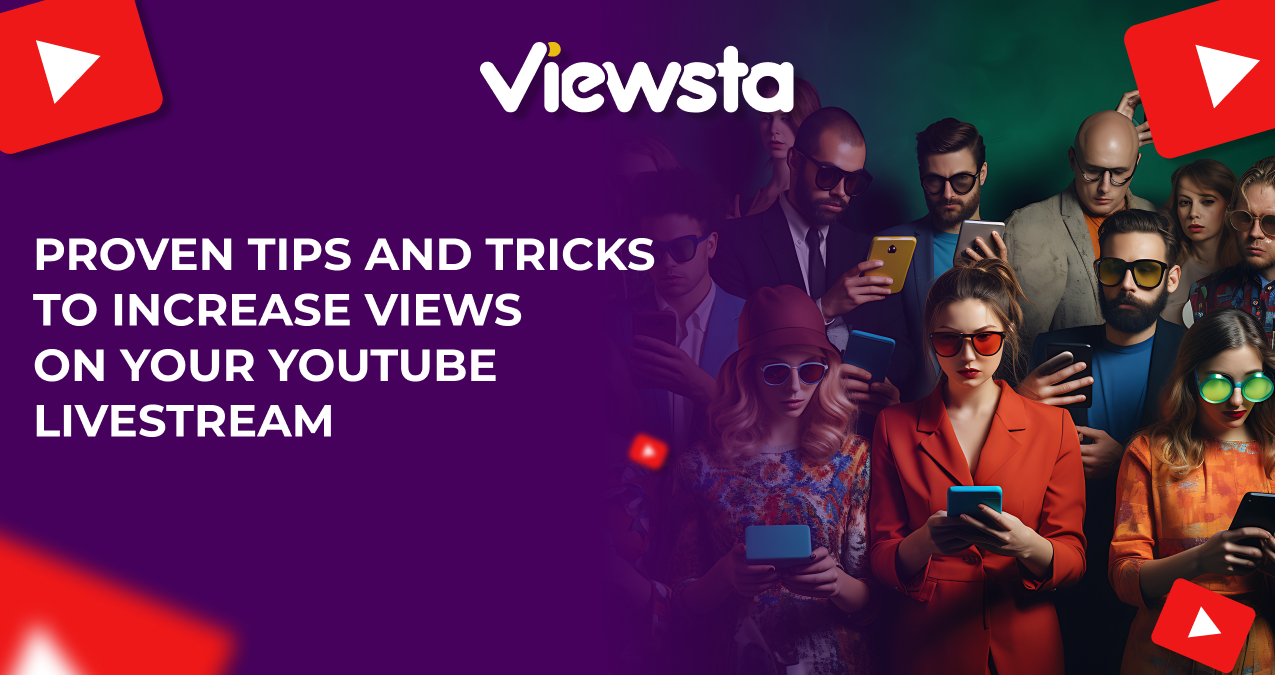
Why Organic Reach Is Still Important in 2025
Read more

YouTube livestreaming is already challenging Twitch. It’s one of the best ways to connect with your audience in real time, which is effective no matter if you’re a brand or a creator. With popularity, competition also grows. If you want your streams to get the attention and be on the top, you’ll need a smart game plan. Below are some practical tips to help you boost your YouTube live views.
The stream starts before you go live. Promotion is an important step. Start by using YouTube’s Premiere feature. It creates a shareable watch page and lets people set reminders. From there, promote everywhere: post teasers on Instagram, drop countdowns on X (formerly Twitter), share behind-the-scenes clips on Stories, whatever works for your audience.
Make your thumbnail bright and easily noticeable. It’s the first thing people see, so make it eye-catching and on-brand. If you’ve got a guest joining you, ask them to promote it too.
Also, sometimes you can send out emails. A short and sweet reminder to your list can bring around more people. And if you’ve got the Community tab on YouTube, use it! Post updates, polls. Just be sure to highlight the exact time and date, and try to go live when your audience is usually online.
Collaborations aren’t just great for regular videos, they work just as well for livestreams. Partnering with another creator introduces your content to their audience, and vice versa. It’s a win-win. Look for creators whose content complements yours. Do a Q&A, host a challenge, or just chat.
Bonus: when you collaborate, you’re also combining promotional forces. More people will know about your stream and that means more views.
Livestreaming is special because it's live, so make the most of it by talking directly with your audience. Answer questions. Run polls. React to comments in real time. You can even throw in a pop quiz or invite viewers to vote on what happens next. The more involved they feel, the longer they’ll stay and the more likely they’ll come back for your next one.
And if you’re looking to give your numbers a little boost while focusing on engagement, you can always buy YouTube livestream views through platforms like Viewsta.
Add relevant keywords so people can actually find your stream. Link out to your socials, related videos, and merch. A well-optimized title and description can improve your stream’s visibility on YouTube.
One of the biggest benefits of livestreaming is being able to connect directly with your viewers. Say hi to new people in the chat, respond to their questions (both on live stream and offline), shout people out, check out more engagement tips here.
Interactive moments like Q&As, polls, and live challenges create a two-way experience that keeps viewers engaged.
If your audience knows you go live every Tuesday at 7 PM, they’ll start showing up for it. Consistency builds trust and viewership. And after your stream ends, don’t forget to add the replay to a relevant playlist so it’s easy to find later.
Even if your content’s amazing, poor audio or laggy video can make you lose some audience. Invest in a decent mic, a solid camera, and strong internet. It doesn’t have to be a full studio setup, but nice visuals and clear sound will keep people watching.
Check your stream’s analytics. YouTube gives you data on how many people watched, how long they were on your channel, where they left, and more.
Use that info to adjust your content. Did engagement spike during the Q&A? Do more of that. Did people leave during the intro? Maybe improve it next time. You can also keep an eye on the comments for direct feedback. Viewsta offers an option to buy YouTube views and comments to grow your presence even faster.
Being popular on YouTube Live is quite a challenge. By promoting smart, staying interactive, and paying attention to your audience, you’ll start seeing more engagement and more views. And whatever you do, stay true to your voice. That’s what people really connect with.
How long should my livestream be?
It depends! Some creators thrive with 20-minute sessions, others go for hours. Just keep an eye on viewer engagement and don’t make it too long.
Can I monetize my livestreams?
Yes. If you’re in the YouTube Partner Program, you can use Super Chat, Super Stickers, and run ads. Just make sure you meet the eligibility requirements first.
Do livestreams have an impact on the YouTube algorithm?
They sure do. Live videos that get good engagement can boost your channel’s visibility, just like regular uploads.
What if something goes wrong during the stream?
Tech glitches happen! Stay calm, explain what’s going on, and have backup gear ready if possible. Your audience will appreciate the transparency.
Can I schedule streams ahead of time?
Absolutely. Scheduling helps you promote in advance and gives your audience time to join you.
What if I’m camera-shy?
Totally normal. Start with voice-only streams or use visuals like slides or screen shares. As you gain confidence, you can ease into being on camera.
What do I need to start livestreaming?
First, make sure your channel is verified and livestreaming is enabled (there’s a 24-hour wait after activation). You’ll need a camera, mic, and possibly encoding software if you’re on desktop. If you want to monetize, you’ll need to join the YouTube Partner Program.